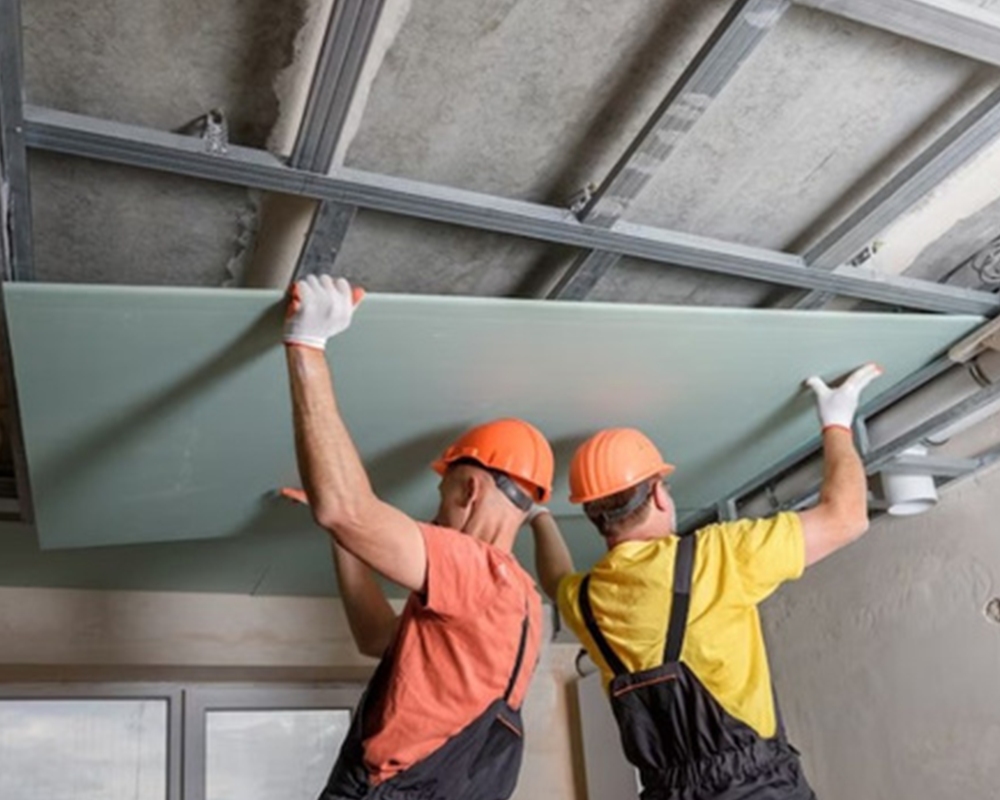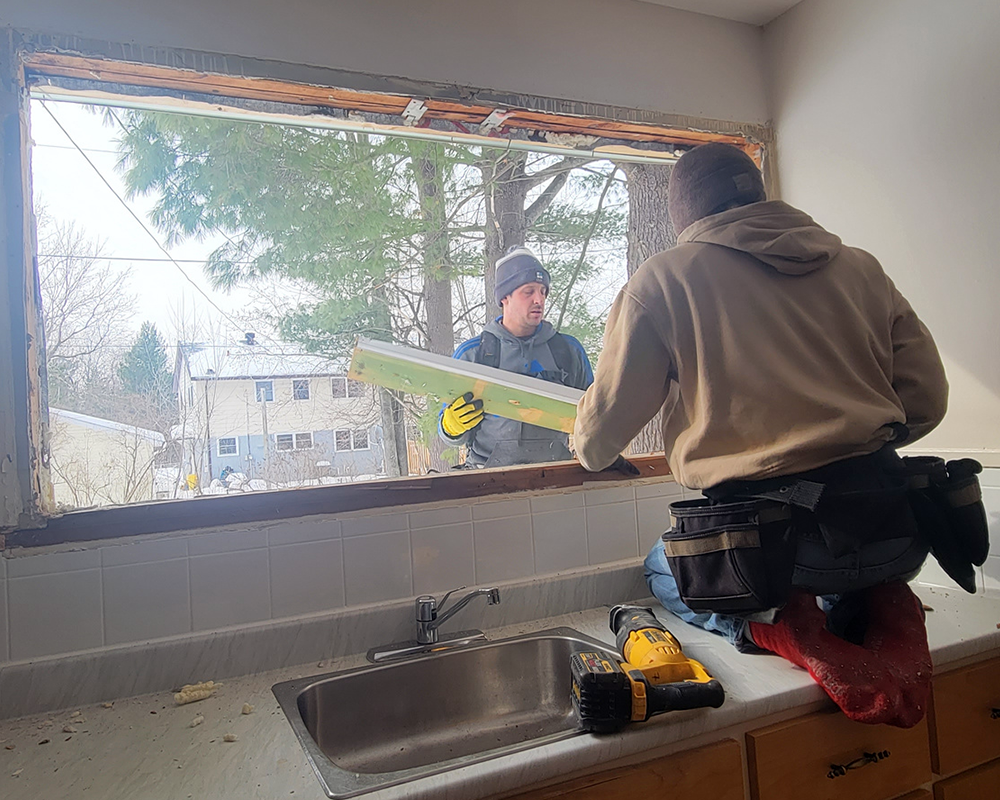
Drywall: Drywall, also known as gypsum board or plasterboard, is a widely used material for constructing interior walls and ceilings. It consists of a gypsum core sandwiched between layers of paper. Drywall is popular choice in both residential and commercial construction due to its affordability, overall ease of installation, and fire-resistant properties. It provides a smooth, flat surface that can be painted or decorated as desired. Drywall panels are available in various thicknesses to meet different structural and acoustic requirements.
Drywall Installation: HEIMS drywall installation process involves measuring, cutting, and fastening drywall sheets to the framing using screws or nails. Once installed, the seams between the sheets are covered with joint compound and tape, followed by sanding and finishing to create a smooth surface.
Drywall Repair: Drywall repairs are often necessary due to damage from moisture, impact, or settling. Small holes or cracks can be patched using joint compound or spackling paste. For larger damaged areas, a section of the damaged drywall may need to be cut out and replaced with a new piece. Proper repairs require blending the repaired section with the surrounding surface and applying paint or texture to match the existing finish.
Bulkheads: In construction, bulkheads refer to partitions or divisions created within a larger space. They are commonly used to create separate areas or enclosures within a room. Bulkheads can be constructed using drywall or other materials like plywood or metal studs, depending on the intended purpose and design aesthetics. They may serve functional purposes, such as concealing utilities (e.g., pipes, ductwork, or wiring) or creating storage spaces, or they can be purely decorative, adding visual interest and defining different zones within a space.
Bulkhead Installation: Bulkheads can be constructed from various materials, including drywall, wood, or metal. HEIMS bulkhead installation process involves framing the bulkhead using appropriate materials, attaching it to the ceiling or walls, and finishing it with drywall or other desired finishes.
Bulkhead Repair: Bulkheads may require repair if they become damaged, unstable, or if there are issues with the surrounding ceiling or walls. The HEIMS specific repair process will depend on the type of bulkhead and the nature of the damage. Common repairs may involve reinforcing the framing, replacing damaged materials, or addressing any issues with the finishes.
Ceilings: Ceilings are the overhead surfaces of a room or building. In construction, ceilings serve both functional and aesthetic purposes. They can provide insulation, improve acoustics, and conceal structural elements, electrical wiring, and HVAC (heating, ventilation, and air conditioning) systems. Ceilings can be constructed using drywall, suspended ceiling tiles, acoustic panels, or other materials. Various designs and finishes are available to enhance the overall look of a space, such as textured surfaces, dropped or tray ceilings, or decorative moulding.
Ceiling Installation: HEIMS ceiling installation process can vary depending on the type of ceiling being installed. Generally, it involves measuring and marking the layout, cutting and fitting the ceiling materials, and securing them in place. For example, with drywall ceilings, the sheets are cut to size, attached to the ceiling joists or framing, and finished with joint compound, tape, and paint.
Ceiling Repair: Ceiling repairs can range from minor fixes to extensive renovations. Common issues include water damage, cracks, or sagging ceilings. For minor repairs, cracks can be filled with joint compound, sanded, and repainted. Water-damaged or sagging ceilings may require removing the affected sections, addressing the underlying issue, and installing new materials to restore the ceiling’s integrity.
When working with drywall, bulkheads, and ceilings, it is important to consider factors such as building codes, structural integrity, fire ratings, soundproofing requirements, and aesthetic preferences. At HEIMS, when undertaking any repairs or installations involving drywall, bulkheads, or ceilings, our qualified tradespeople follow local building codes and regulations, while meeting all the necessary standards and specifications to ensure a safe and professional finish to your project.
Sliding Work Gallery


Comments are closed.